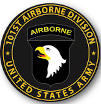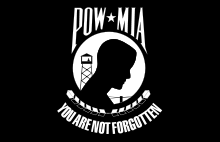


The Army Superior Unit Award emblem worn to represent award of the Army Superior Unit Award is 1 7/16 inches wide and
9/16 inch in height. The emblem consists of a 1/16 inch wide Gold frame with laurel leaves which encloses a ribbon of
the following pattern: 17/32 inch Scarlet 67111; 1/32 inch Yellow 67103; 1/4 inch Green 67129; 1/32 inch Yellow; and
17/32 inch Scarlet. The streamers are the same pattern as the emblem ribbon
See Army Regulation 600-8-22, Military Awards.
The current components of the Army Superior Unit Award are the emblems awarded to members of the unit and the streamer for display on the unit flag/guidon.
a. Army Superior Unit Award Emblem: MIL-D-3943/32 (frame) and MIL-R-11589/304 (ribbon). NSN 8455-01-221-1109.
b. Streamer: MIL-S-14650/5. Manual requisition in accordance with Chapter 9, Army Regulation (AR) 840-10.
c. Lapel Button: MIL-L-11484/187.
a. As part of the Army Cohesion and Stability Study (ARCOST) of 1980, a proposal to adopt the Army Superior Unit Award was forwarded to Major Army Commands (MACOM) for comment on 18 March 1981. This recommendation was based on the fact that present Army unit awards were for combat service only. While all MACOM and most of the Army Staff supported the proposal, the leadership elected not to approve the new award. In 1984, the Vice Chief of Staff, Army, directed that a Peacetime Unit Award be developed and submitted for approval. In April 1985, the Secretary of the Army (SECARMY) approved the Army Superior Unit Award for meritorious unit performance of a uniquely difficult and challenging mission under extraordinary circumstances that involved the national interest. As a result of the strict criteria and lack of approving awards, the criteria was changed by SECARMY in July 1986. This change deleted the words “unique” and “national interest”. Only one award was approved prior to the revision and it went to the 3d Battalion, 502d Infantry, 101st Airborne Division. Nearly 200 of the 248 soldiers that were killed in the plane crash in Gander, Newfoundland, were from the battalion and were on their way home in December 1985 from duty with the Multinational Force and Observers in the Sinai Desert.
b. On 17 September 1991, in a memorandum to the Secretary of the Army, The Adjutant General (TAG) requested approval to create a lapel pin to be worn by all members of units awarded the Army Superior Unit Award. This recommendation was based on the fact that the award was being presented to units with a significant number of civilians assigned and there was no visible means of recognizing them. This change permitted issue of an emblem to both military and civilian personnel. The Secretary of the Army approved the recommendation on 12 December 1991.
c. The emblem is worn by all members of a cited organization and is considered an individual decoration for persons in connection with the cited acts and may be worn whether or not they continue as members of the organization. Other personnel may wear this decoration while serving with an organization to indicate the unit has been awarded the Army Superior Unit Award.
d. Order of precedence and wear policy for unit awards is contained in Army Regulation (AR) 670-1. Policy for awards, approving authority, and supply of the unit award emblem is contained in AR 600-8-22. The policy for display of unit awards on guidons and flags and supply of streamers is contained in AR 840-10.
 |
 |
 |